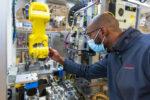New white paper finds impending issues for NZ boards
A new white paper finds that New Zealand boards face many of the same issues and obstacles as their overseas counterparts, with a number of problems originating in the communications field – such as the collapse of the tech-sector backer Silicon Valley Bank after a bank run triggered by a convoluted, disastrously timed media release. Titled ‘2023: The Perfect Storm?’ and subtitled ‘23 Habits your Board Should Change in the Era of Polycrisis’, “2023: The Perfect Storm?” the themes of the white paper tip a hat to the buzzword emerging from this year’s World Economic Forum in Davos. Polycrisis refers to the rolling maul of global emergencies amid persistent geopolitical and economic instability; the white paper is designed to help boards plan for and grapple effectively with volatility of all kinds. The white paper observes there are commonalities in bad or unproductive habits among boards, and New Zealand governance follows similar patterns to boards in overseas markets. The common themes which have emerged globally include: Failing to develop or adhere to a coherent strategy Trying to declare ‘crisis over’ too early Acting without sober preparation and planning Letting ego into the boardroom Favouring short-term results over long-term objectives Another recent public example of board failings was the case of CEO and founder Simon Henry and the board of his company DGL. Henry and the board were castigated after Henry made offensive and derogatory remarks about a female entrepreneur in a media interview and it took days for the board to condemn his comments. Analysis of the matter found Henry, as the company’s majority shareholder, had an outsized influence on the board, whose slowness to respond to their CEO-made crisis – which drew comment from the Race Relations Commissioner and the Prime Minister, among others – likely contributed to the company’s […]










